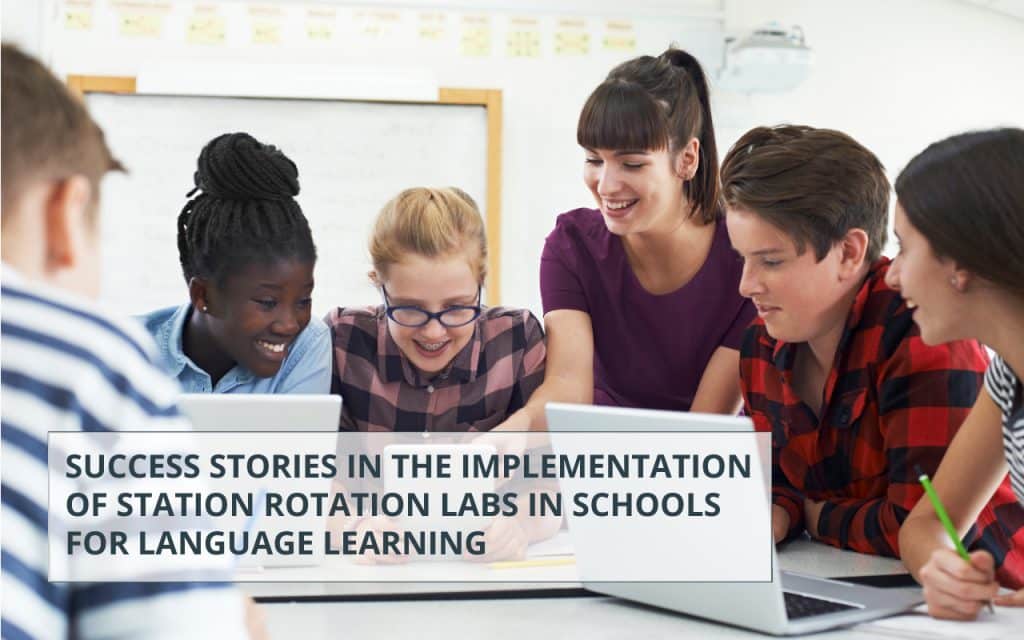The station rotation learning model allows students to rotate through different types of classrooms that may be either offline or online. Thus, the teacher expands upon the way they teach and explains the classes, for
example:
- A traditional classroom to explain the material.
- A classroom for interactive learning and teaching, working on the subject matter in question with computers in order to put into practice what has been learned.
These spaces allow students to engage in the practice of speaking, interact with other students and teachers, and learn grammar and practice its use – dedicating some time for offline/online practice and some time for in-class practice with the teacher.
We at CAE know the importance that this method is taking on as time passes and always want to meet the needs of all our users and to ensure evolution in the learning process in order to promote the proper use of the existing spaces and materials in these educational institutions.
In this e-book entitled, “Success Stories in the Implementation of Station Rotation Labs in Schools for Language Learning”, you will discover how this way of teaching has today become a fundamental pillar for all those who are doing multimedia foreign language courses. In the book, several main points will be covered:
- What is a station rotation lab and how does it differ from other modes of
learning? - How do station rotation labs work?
- Why use station rotation labs?
- How can station rotation labs be fully taken advantage of?
- Methodology.
- Success stories in the implementation of station rotation labs at universities for language learning.
Educational platforms have transformed education by creating interactive learning environments which facilitate practice and the development of different language skills. Thus, today, more and more education professionals are opting for the use of station rotation labs at their learning centers.
These professionals are increasingly aware of the need to create an environment in which students can experience complete language immersion.
This method of learning provides a series of variables that other types of learning cannot, such as: interactivity, dynamism, effectiveness, and quality. It covers a wide range of educational matters like languages, full classroom immersion, structured and ordered content, and much more.
So don´t delay any longer, and download our completely free e-book to discover even more about the success associated with implementing station rotation labs in schools for language learning.
[cta id=’10345′]

